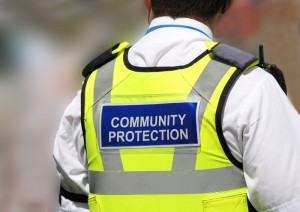
The Equality and Human Rights Commission (EHRC) has described disabled people’s experience of disability-related harassment as ‘hidden in plain sight’ as a result of ‘a culture of disbelief that exists around the issue’ (EHRC, 2014:3).
Similarly, the subtitle to Mark Sherry’s comprehensive book on disability hate crime, ‘Does anyone really hate disabled people’ (which he answers with a resounding yes), suggests a lack of public awareness or acknowledgement that disabled people would be targeted as victims of crime motivated by hatred (Sherry, 2010).
As this paper by Emerson and Roulstone notes, two systematic reviews recently commissioned by the World Health Organisation have demonstrated that internationally disabled people are more likely than their non-disabled peers to be victims of violence across the life course (Hughes et al, 2012; Jones et al, 2012).
These reviews highlight a paucity of robust data ‘due to a lack of well-designed research studies and more standards of measurement’. The authors point specifically to the ways in which disability is categorised and measured in existing data sets and to the emphasis on either specific groups of disabled people (such as people with mental health problems) or on disabled people generally, without comparing the varied experiences of people with different impairments and other characteristics.
The purpose of this study was to interrogate an existing source of data, the UK’s Life Opportunities Survey (LOS), in order to compare rates of exposure to violent and hate crimes among disabled and non-disabled people and then within that to compare the rates of exposure among those with different impairments or health conditions. The final aim was to examine the association between risk of exposure and other characteristics such as age, gender and poverty status.
What is hate crime?
Hate crime has been defined by the Association of Chief Police Officers as
any criminal offence that is motivated by hostility or prejudice based upon the victim’s: disability, race, religion or belief, sexual orientation or transgender identity (Crown Prosecution Service, 2012)
While Section 146 of the UK Criminal Justice Act (2003) defines disablist hate crime as
any incident which is perceived to be based upon prejudice towards or hatred of the victim because of their disability or so perceived by the victim or any other person
The Act imposed a duty on the courts to increase the sentence for any offence aggravated by hostility based on the victim’s disability (or presumed disability).

Disablist hate crime is based on prejudice towards or hatred of the victim because they are, or perceived to be, disabled.
Methods
The authors carried out a secondary analysis of data from the UK’s Life Opportunities Survey (LOS). The survey is undertaken by the Office for National Statistics on behalf of the government’s Office for Disability Issues and has been running since 2009.
The survey compares how disabled and non-disabled people participate in different areas of society like work, education, social participation, transport and use of public services. The particular focus is to ‘identify the reasons why people do not take part in these areas as much as they would like to’. The results of waves 1 (2011) and 2 (2014) are available on line and wave 3 is due to be published later in 2015.
The authors identify the two main strengths of the survey as being the use of a comparatively large and nationally representative sample and significantly the approach taken in the survey to identify disabled respondents.
Rather than asking whether respondents have a disability or limiting illness (which may be followed up with a question about the type of condition or diagnosis) here all respondents were asked about a list of impairments or health conditions and about the impact this has on their lives. This means the results are not based on whether someone identifies themselves as disabled and also allows the data to be disaggregated by impairment group.
The article provides detail about the questions used in the survey to record impairments, about the crimes people experienced and other characteristics like household poverty.

Only 1 in 3 disabled people who reported being the victim of hate crime attributed it to their disability or impairment.
Findings
The paper presents detail about the prevalence of violent and hate crime, it adds risks of exposure and impairment type and of the association between age, gender, ethnicity and poverty status and crime in detailed tables. The headline findings can be summarised as:
- Disabled people are 3 times more likely to have been a victim of violent crime and 2.6 times more likely to have been a victim of hate crime in the previous 12 months than their non-disabled peers.
- Only 1 in 3 disabled people who reported being the victim of hate crime attributed it to their disability or impairment.
- There are different rates of risk of exposure for impairment groups with people with mental health problems, behavioural difficulties or cognitive impairments being at greatest risk.
The strongest association between personal and contextual characteristics and risk of exposure to crime was with poverty status which applied to both disabled and non-disabled people. What was significant was that affluent disabled people are at no greater risk than their non-disabled peers but as
the severity of poverty increases, disabled respondents became disproportionally at risk of becoming victim of violent crime and hate crime.
The highest self-reported rates of exposure were amongst:
- Men with psychosocial impairments aged 35-54 living in severe poverty (30% violent crime)
- Women with psychosocial impairments aged 16-34 living in more severe poverty (19% hate crime; 15% disablist hate crime)
The authors point out that the survey failed to adequately include people with severe cognitive impairments (either because they were excluded or proxies responded on their behalf) and disabled people living in institutionalised forms of residential care because of the use of a general household sampling frame. They refer to a range of other reports which support the consistency of the findings with other research.

Severity of poverty leads to a ‘marked and increasing difference in risk’ of disablist hate crime.
Conclusions and summing up
This article makes an important contribution to better understanding what is (already) known about violence and hate crime in existing data. The secondary analysis of the Life Opportunities Survey s provides clear evidence of the situational nature of the experience of violent and hate crimes (not just disablist hate crimes) by disabled people.
The most significant finding is the extent to which risk was ‘in general powerfully moderated by social context’ which challenges myths about the inherent vulnerability of disabled people. Severity of poverty leads to a ‘marked and increasing difference in risk’. This is particularly concerning when there is a long established connection between disability and poverty (MacInnes et al, 2014) and when disabled people are being disproportionally targeted by welfare reform and other austerity measures (Kaye et al, 2012).
This research provides the key message to policy makers and practitioners that initiatives seeking to reduce exposure to violent and hate crime should be focused on more deprived communities where disabled people live.
Link
Emerson, E. and Roulstone, A. (2014) ‘Developing an Evidence Base for Violent and Disablist Hate Crime in Britain: Findings From the Life Opportunities Survey’ Journal of Interpersonal Violence 29 (17) pp. 3086-3104 [Abstract]
References
Crown Prosecution Service (2012) Hate crime fact sheet [Full Text]
Equality and Human Rights Commission (EHRC) (2014) Hidden in plain sight: inquiry into disability-related harassment. Executive Summary [Full Text]
Hughes, K. Bellis, M. A., Jones, L., Wood, S., Bates, G. Eckley, L., McCoy, E., Mikton, C., Shakespeare, T., and Officer, A. (2012) ‘Prevalence and risk of violence against adults with disabilities: A systematic review and meta-analysis of observational studies’ Lancet 379 pp1621-1629 [Abstract]
Jones, L., Bellis, M.A., Wood, S., Hughes, K., McCoy, E., Eckley, L., Bates,G., Mikton, C. Shakespeare, T and Officer, A. (2012) ‘Prevalence and risk of violence against children with disabilities: A systematic review and meta-analysis of observational studies’ Lancet, 380 pp899-907 [Abstract]
Kaye, A. Jordan, H and Baker, M. (2012) The Tipping Point. The human and economic costs of cutting disabled people’s support The Hardest Hit Coalition [Full Text]
MacInnes, T., Tinson, A., Gaffney, D., Horgan, G., and Baumberg, B. (2014) Disability, Long Term Conditions and Poverty York: Joseph Rowntree Foundation [Full Text]
Sherry, M. (2010) Disability Hate Crimes Farnham: Ashgate

Today @HannahnagroM blogs on #disability hate crime research by @AlanRoulstone http://t.co/JzZQKd0R6G @BeresfordPeter @DisRightsUK
My latest @SocialCareElf blog on #disability hate crime research by @AlanRoulstone & @CeDRLancs Eric Emerson
http://t.co/pS2s5MJ9y8
Read this: My latest SocialCareElf blog on #disability hate crime @HannahnagroM
http://t.co/uQpyiNHgAT
I has long been accepted by many commentators that there has been an increase disability hate crime when the Department of Works & Pensions began spinning to the media that disabled people were ‘scrounging’ disability benefits. I began to experience verbal and physical assaults from that point on and in Jan 2011 I was pushed into on coming traffic, whilst satin my wheelchair waiting to cross a road at traffic lights.
@HannahnagroM blog today looks at #disability #hatecrime research. Is there a link with #poverty? http://t.co/JzZQKd0R6G
RT @GMPCC: Disabled people 2.6 times more likely to have been a victim of #hatecrime: http://t.co/XnFixBuTxr #disability
RT @HannahnagroM: My latest @SocialCareElf blog on #disability hate crime research by @AlanRoulstone & @CeDRLancs Eric Emerson
http://t.co…
DP 2.6 x more likely to have been a victim of hate crime in the last year than non-disabled peers. http://t.co/AD1PRF1sfA by @SocialCareElf
Research findings interrogate current policy approaches to disablist hate crime http://t.co/nPXmLGaXfq via @sharethis